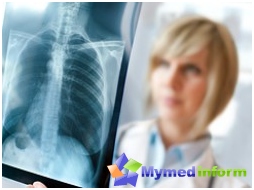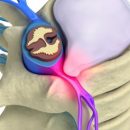At the same time, some parts of the lungs are covered by scars. Lung fabric is wrinkled and compacted. As a result, bronchi deform and disturb the functions of a normal gas exchange in areas where pathology is observed. Due to the constant seal, the lungs decrease in their sizes. The destructive process of damage to the tissues of the lungs with pneumosclerosis is irreversible.
Causes

The study of this disease led to the conclusion that pathological changes can begin in a person of any age, but most of all smoking men of middle-aged. The main reasons for the occurrence of this diagnosis are frequent Pneumonia, chronic bronchitis, lung abscesses as well tuberculosis.
The development of such pathology is possible due to any long-term infectious diseases in the lungs. Therefore, the disease may arise due to transferred inflammations of pulmonary bubbles (alveoli), fungal infections, lesions of pulmonary vascular walls, granulomatosis and lung sarcoidosis.
Sometimes pneumosclerosis is developing as a result of stagnant processes with severe heart failure and other violations of the work of the cardiovele and a trust system and blood circulation system. The reason for the occurrence of this disease can also be to hit the gastric juice and untapped food particles in the respiratory tract due to the presence of chronic astroezophageal reflux.
The occurrence of pneumosclerosis is possible due to poisoning by chemicals, as a result of a certain mechanical impact on light (impact, injury), due to chronic decrease in immunity, as well as due to entering light particles that damage their tissues.
Increases the risk of developing pathology. The presence of such factors as smoking, diabetes, Radiation therapy, reception of some drugs, heredity and accommodation in the territory with a bad environment.
Types of pneumosclerosis

With local changes, no external symptoms are usually observed. External symptoms are characteristic only for diffuse disease. In particular, in this case such symptoms are observed as dry cough, dyspnea, Weakness, weight loss and fast fatigue.
When defeating the upper lung departments, there is such a sign as «Hippocratic fingers», in which the fingers swell and look like a drum wand. If the lower pulmonary shares are affected, then pathology affects bronchi and small bronchioles. If such patients have lungs, then crispy sounds will be heard when inhaling.
Diagnostics

For diagnosis of pneumosclerosis, an x-ray is preferably used, with which it is possible to estimate the state of the lung tissue, degree of lesion, identify the type of change (scar or infiltrative) and find out the reason for the development of the disease. In the pictures you can determine whether there is a tumor in the lungs.
In order to make a full picture, make X-rays of the chest in the side and direct projection. In addition, it is best to make computed tomography. This diagnostic method is especially useful for studying intradolk connecting tissue and to estimate its degree of destruction.
If there are fibrous changes, then the radiogram marks a distinct drawing. If the connecting tissue of the bronchi and bronchiole and the interlimoolar partitions are normal, then it should not be reflected in the X-ray. In the event that the connecting tissue is increased in volume, then it is noticeable in the image of the cells that manifests over the pulmonary pattern.
Treatment of pneumosclerosis

First of all, it is necessary to treat the disease, against the background of which pneumosclerosis. In particular, it may be diseases of the lungs and cardiovascular system. If the inflammatory process does not occur in the lungs, then the pneumosclerosis is usually not treated.
In the treatment of pneumosclerosis, in particular, drug therapy is used. So, if the disease was provoked by pneumonia or bronchitis, antimicrobial, anti-inflammatory and expectorant drugs are prescribed.
During the therapy of pneumosclerosis, therapeutic physical education, medical gymnastics. At the same time, muscles and breathing are trained. Patients are recommended hardizing procedures and swimming.
If necessary, the surgical methods of treatment of pneumosclerosis are used. In this case, it usually removes the affected piece of lung tissue.









